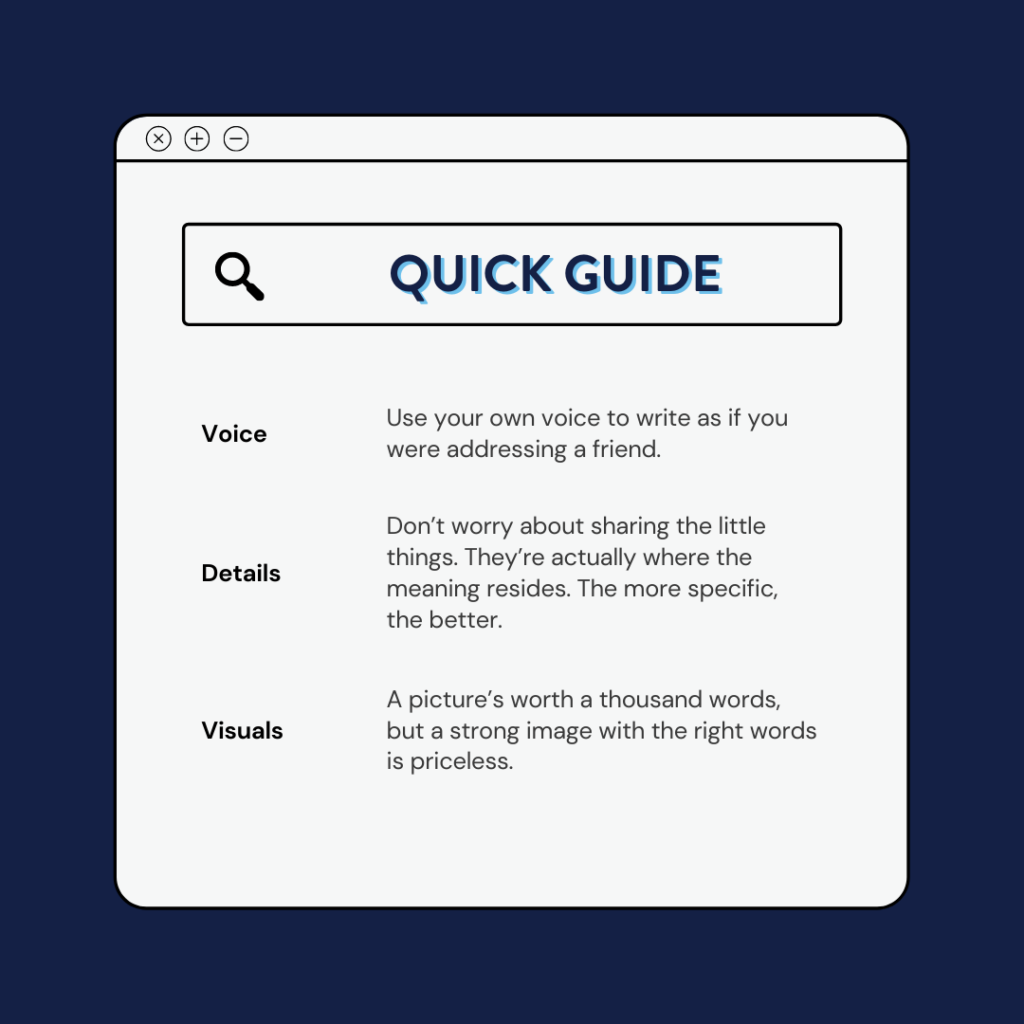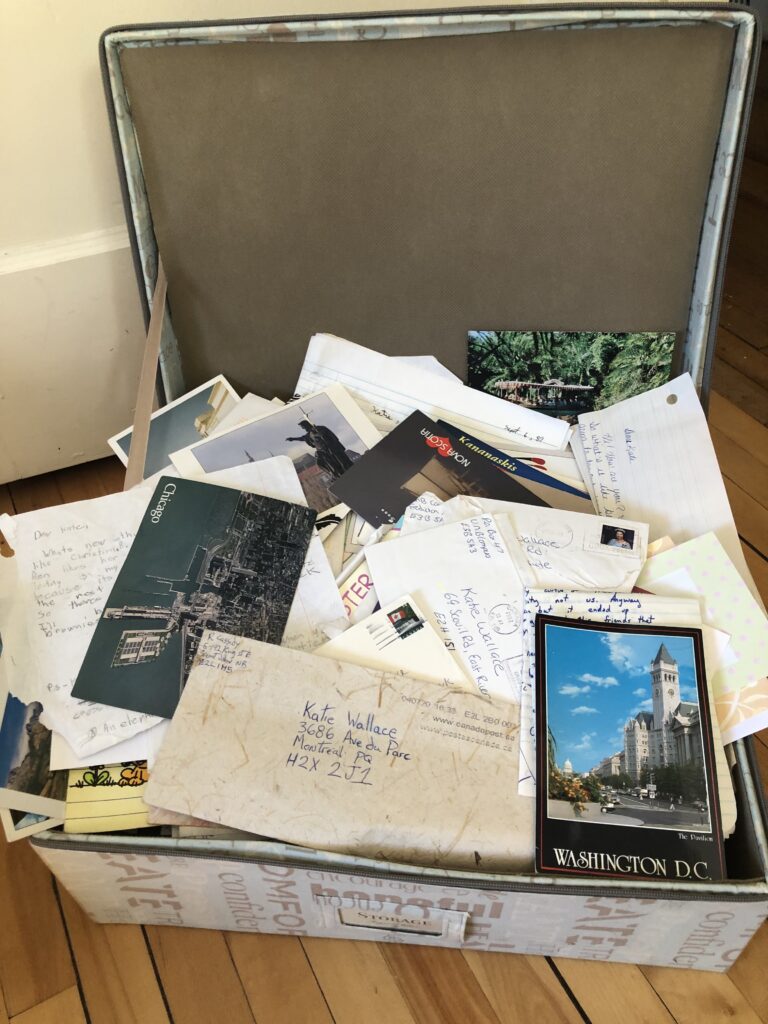I stash my memory box under the double bed in the guest bedroom. The hard-sided, blue fabric-covered little trunk is stuffed with photos and trinkets and what appears to be every letter I’ve ever received. There are stacks of them, bound with sparkly elastic ribbon.
I went down a rabbit hole the other night, reading them, time-travelling through childhood and my teenage years to young adulthood and the approach and arrival of middle age.
There are jokey classroom notes from my old pals. Messages of congratulations at life’s milestones from family friends. Love letters from my then-boyfriend, now-husband, in the days before texting. There are long, handwritten letters on floral stationery, quick and quippy notes on ripped pages, and postcards. They were addressed to me at various locales: Camp Glenburn, remote northern Canadian bush camps when I was tree-planting, assorted Montreal apartments, a Quebec city sublet, various Saint John homes.
I had forgotten how many letters I used to write, how many correspondents I had. In fact, I could not place some of them, including an encouraging typewritten note on a ripped page from someone named Dev, who I cannot for the life of me recall, telling me he/she/they (?) knows how I feel, and that I’m sure to love again. I also can’t recall the heartache to which Dev refers, which is comforting (time heals all wounds) and spooky (who are these people, and why is my memory so fallible?).
I was struck by how lively and interesting these letters were, and not, I don’t think, just because they were meant for me. There’s something about the epistolary form that lends itself to a warm immediacy that creates strong reader resonance.

If you’re struggling with your own writing, whether it’s a caption, a post or a podcast intro, why not try writing it as a letter? Here’s how:
Use Your letter-writing Voice
When we write a letter to a friend or family member, we do so as ourselves. Our inflections, our sense of humour, our grammar, even the tidiness of our handwriting (extra neat for proper letters to Granny, more loose and wild, with lots of parentheses and margin notes for old friends). When you’re struggling to get a blog post or a caption or some newsletter copy started, think of your ideal reader, then write to them with the same familiarity and warmth as to a loved one.
Share Lots of Details
When I was at Camp Glenburn as a kid, it’s a wonder I ever put my pen down and left my bunk, so prolific was my correspondence during those two glorious weeks away. It was only a 30-minute drive and a ferry ride from home, but camp is the land of children, and my first taste of independence felt as exotic as a grand tour of a different country. I wrote to my younger sister and brother, parents, grandparents, and friends back home. And they wrote back.
My Granny was especially prolific, sending letters describing community news, like the new sidewalk being installed and how they had to park at the neighbours. (“Quite an inconvenience!”). She wrote about the upcoming flower show and my mom’s new haircut. “She looks 15 years younger. Your dad seems to like it.”
These sweet nothings of daily domestic life add up. They create a picture of a time and place, a life, a perspective. Don’t worry about sharing the little things. They’re actually where the meaning resides. The more specific, the better.
Complement letter Text With Visuals
Many letters are just text, but they all have an aesthetic, from the size and quality of the paper to adorning doodles and pictures in the margins, the images on the front of cards, and postcards.
“Write to the pictures” is the advice I retain from my TV broadcast class at journalism school, and it applies to letters as much to your Instagram feed or blog.
My Dad sent me a postcard to camp one year from Fundy National Park, where he and my mother had gone for a little getaway while us kids were away. The picture on the card was of the park’s golf course. Dad had drawn an arrow pointing to the woods and a caption: “Mommy’s ball is here.” A picture’s worth a thousand words, but a strong image with the right words is priceless.
Draft your post
While I’m not saying that you should pull out the stationary every time you want to draft a caption to your latest Instagram post, doing it as a letter is a great way to write in a way that’s personal, and truly authentic .
So the next time you need to draft something, open up your notes app and draft it like a letter. Then you can follow these tips to edit it from there.



